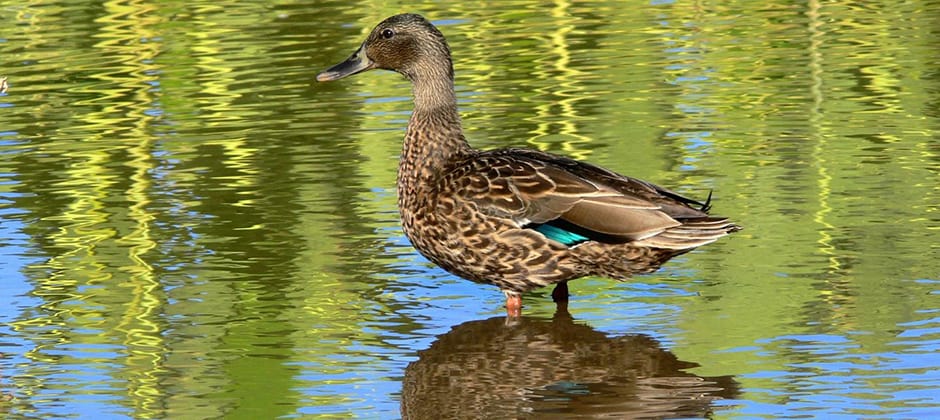Share this article
Endangered Hawaiian duck genetics persist on Kauai
Genetics research reveals the endangered koloa — the only native Hawaiian duck left on the main Hawaiian Islands — persists despite its hybridization with feral mallards.
The island of Kauai remains the stronghold for the species, said Caitlin Wells, a research scientist in the department of fish, wildlife and conservation biology at Colorado State University and lead author of a recent study on the species published in Molecular Ecology.
The bird was extirpated from the other islands by the 1960s due to overhunting, introduced predators like mongoose, rats and cats and Hawaii’s increasing tourist pressure. Placed on the endangered species list in 1967, the koloa (Anas wyvilliana) was restored to other islands through captive breeding programs, but that created another issue, Wells said.
“The problem was, those islands already contained large populations of feral mallards,” she said. Escaped from backyards, they nested in urban areas, public parks and other wetland habitat , where they found humans eager to feed them.
In the process of conducting waterbird counts throughout refuges in the state, biologists began seeing birds they couldn’t quite pinpoint as either koloa or mallards (Anas platyrhynchos). Some had the characteristic green heads of mallards but the brown-and-black bodies and smaller size of koloa. Mallards were interbreeding with the koloa, biologists realized, and they feared these hybrids would make it harder for true koloa to persist.
Wells and her colleagues worried hybrids might be on Kauai, where the koloa populations appeared to be doing well and the mallards had been removed from Kauai hotels. There was still a risk that individual property owners had backyard mallards. The team set out to test the genetics of ducks across the Hawaiian Islands. They studied 425 ducks, collecting genetic data from them all. They captured the birds, collected blood samples, banded them and released them back into the wild. They also collected genetic data from koloa carcasses they retrieved after botulism outbreaks killed them.
The researchers learned some good news. On Kauai, most of the ducks were pure koloa. “Kauai is still a good stronghold for the species,” Wells said. “But we worry one population on Kauai isn’t enough for the long term survival of the species.” On the North Shore of Hawaii’s Big Island, they found evidence that hybrids were about 80% koloa, suggesting it may be a good place to relocate koloa to establish another population.
But the first action should be removing the feral mallards, she said, although it’s not always a popular move with the public. “Koloa are a unique native species that exist nowhere else, and without that value of awareness of the species, it’s hard for the public to prioritize it,” she said.
Hawaii was once home to many species of waterfowl, Wells said, but since this is the last native duck on the main islands, it’s even more important to conserve it. The koloa are also a functional part of the ecosystem, eating small seeds that sift down to the bottom of ponds and spreading them in the wetlands. “Mallards are not participating in the food web,” she said. “They’re not moving these plants around pond to pond.”
The koloa, which doesn’t fly from island to island, still faces threats of climate change, sea level rise, strong hurricanes and invasive predators, but Wells is hopeful.
“I’ve worked with other bird species on the Hawaiian Islands — honeycreepers in the high elevation forests,” she said. “There are so many other Hawaiian birds that are extinct or endangered due to climate change, avian malaria and habitat loss. This is a species we can save if we try. We know what the major threats are.”
Header Image:
Endangered koloa, like this one, are the only native duck left on the main islands of Hawaii. Biologists doing waterfowl counts began findings hybrids of koloa and mallards.
©Christopher Malachowski, Oregon State University








